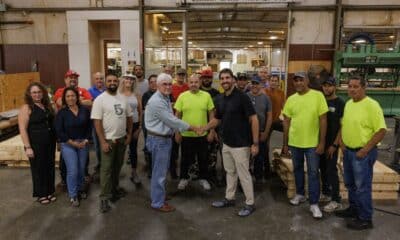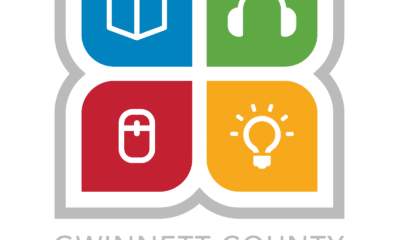Arts & Literature
Emmy Award-Winning Filmmaker Calls Peachtree Corners Home
Published
2 years agoon
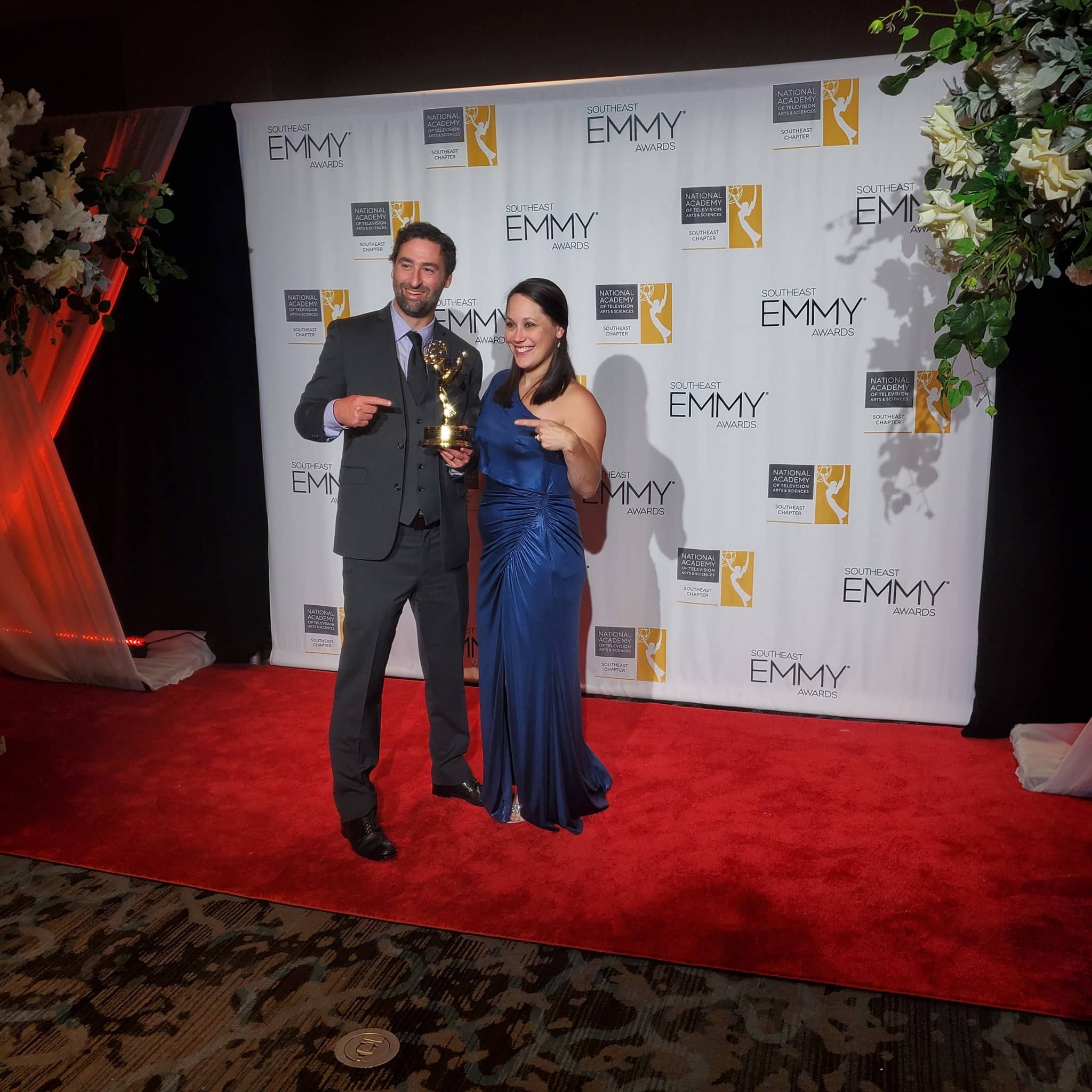
Unlikely bond between a Braves player and Mets fan earns local filmmaker an Emmy.
As the 20-year anniversary of 9/11 approached last year, Kevin Allison and Bally Sports South/Southeast Braves knew the best way to mark the solemn occasion was to look back on the singular importance one baseball game made toward the first steps of healing. When the Atlanta Braves and New York Mets took to the field for the first sporting event after the September 11 attacks, it was about much more than winning or losing.
The 7½ minute short documentary, More Than A Game — Braves at Mets — 9/11 Remembrance, recently won a Southeast Regional Emmy Award from the Southeast chapter of the National Academy of Television Arts & Sciences. Peachtree Corners resident Kevin Allison edited and produced the film, along with chief photographer Gregg Therieau.
"The moment was obviously bigger than the game."
— Bally Sports: Braves (@BravesOnBally) September 11, 2021
That unforgettable September night at Shea Stadium.
When @Braves and @Mets players took the field for the first sporting event in New York City after the September 11 attacks, the game meant more than winning or losing. pic.twitter.com/rMb2gg2U8N
Healing through sports
“During the pandemic in 2020, there were a lot of discussions about missing sports and how sports help in the healing process,” said Kevin. “We were doing a lot of historical content at the beginning of the pandemic. A lot of former players — Chipper Jones, Brian Jordan, Tom Glavine, a lot of those guys — would refer back to their time during September 11 and how sports helped people process the tragedy.”
Knowing that a year later was going to be the 20th anniversary of those tragic events, Kevin began doing a lot of research, looking at old photos and raw footage from the Braves versus Mets game that took place just 10 days after the historic terrorist attacks. He kept coming across photos of Brian Jordan with a Mets family whose hero father/husband had perished during the World Trade Center attacks.
With one iconic image of Jordan embracing the overcome-with-emotion widow, Carol Gies, Kevin knew he had found the storytelling connection he needed.
“Come to find out, they had stayed in touch a little bit through the years,” said Kevin. “During the making of the feature, we actually reconnected the two of them as well.” Gies remembers the night and the painful memories surrounding those early post-9/11 days, but credits Jordan with helping her family tremendously by coming over and saying the kind words that he did.
Connecting stories to the human element
Piecing together a story and finding the personal connection is what Kevin seems to enjoy most about his work. From the time he began filming interviews for the feature film to editing those 7½ minutes took about a month of work. Before beginning interviews, from the time research began, was closer to a year.
Most Braves fans will remember a Mets homerun sealed the game for the home team that night. Most fans also accept that Mets win as how the game needed to end.
When asked about his approach to documentary filmmaking, Kevin stated, “For me, it has always been: what’s the connection and how do I connect the storytelling to get the human element? Especially when it comes to sports, you can be fans of the team, but how do you find the human interest for an individual?”
Kevin’s wife, Jaclyn Allison, is often the first audience to judge that emotional connection. As Director Marketing, Communications and Events at Partnership Gwinnett, Jaclyn understands the subtleties of good communication and, for her job, how to create events that will draw on an individual’s or group’s desire to engage.
Jaclyn’s work with Partnership Gwinnett
Partnership Gwinnett is a public/private initiative designed to drive “economic prosperity by attracting, expanding and retaining quality businesses; aligning and developing diverse talent; and contributing to the exceptional quality of life in Gwinnett County.”
“We have three different goal areas,” explained Jaclyn. “We focus on business development, recruiting and retaining business in our community, talent development — so we work with the university and school systems to build up our talent pool, and then our community development — working a lot with entrepreneur development and small business culture.
Within our goal one, business development, we focus on five target sectors: manufacturing, supply chain, technology solutions, health sciences and services and then corporate and professional services. Anything that falls within those sectors we focus on and work with our community to bring here.”
Jaclyn works on a number of events that target those sectors. She’s currently working to bring The State of Technology Summit to Peachtree Corners November 10 at Atlanta Tech Park. It will bring together keynotes and speakers to talk about trends and best practices in the technology sector.
She’s also very proud of her husband’s work and was the first to share that his latest Emmy is not his first. In fact, this is his eighth Southeast Regional Emmy Award.
Kevin’s dream career and life
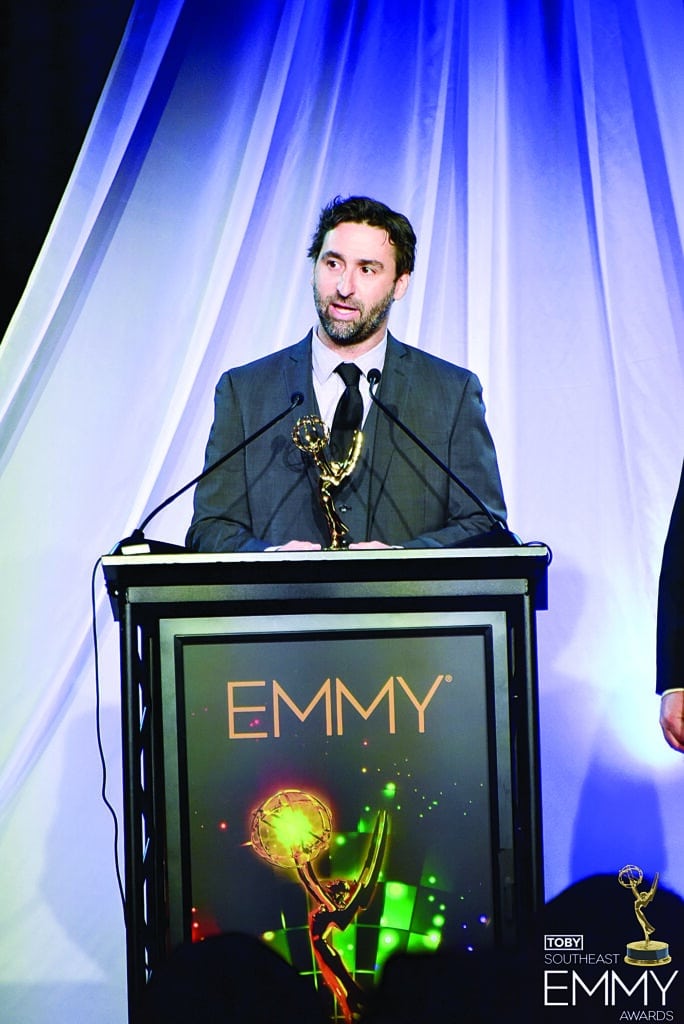
It all comes from an honest place. Kevin Allison has been a huge sports fan his whole life and he readily admits he just enjoys TV. Combining those passions into a career is the dream.
For “More Than A Game – Braves at Mets – 9/11 Remembrance,” he took a lot of care. “For something that impacted so many people, even if it was 20 years ago — and out of respect for Carol who was still willing to tell this story 20 years later — for me the goal was what’s the most respectful way to tell this story,” Kevin stated.
Kevin was proud and happy this film was recognized, not so much for the personal accolades, but because of the story and the people involved. “I work with Brian Jordan every day and he is one of the best people to work with and one of the kindest people in this community,” said Kevin. Being able to share Carol and Brian’s story meant being able to recognize two of many special individuals who made a difference in those very challenging days post 9/11.
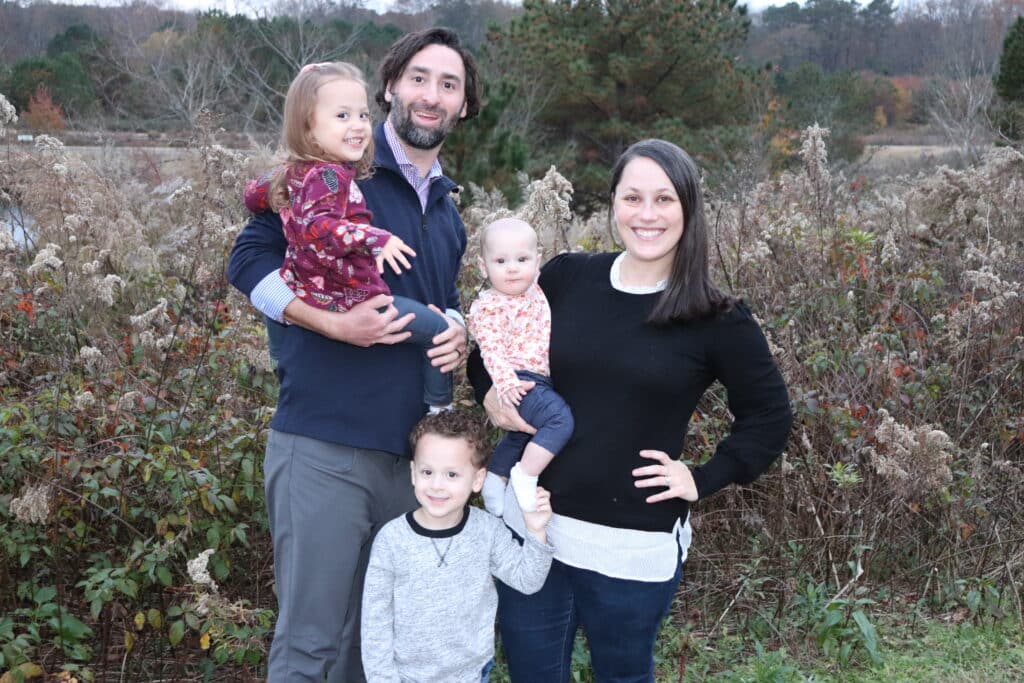
Introducing you to Kevin and Jaclyn would not be complete without sharing that their Peachtree Corners family is currently a busy one, with three young children ages one, three and four. The little ones haven’t been to see the Braves play yet, but it’s inevitable. We anticipate you’ll also be seeing each of those young ones on the ballfields in and around Peachtree Corners soon.
Allow yourself seven and a half minutes, grab a tissue and be inspired by More Than A Game – Braves at Mets – 9/11 Remembrance.
Kevin Allison’s 9 Emmy Awards
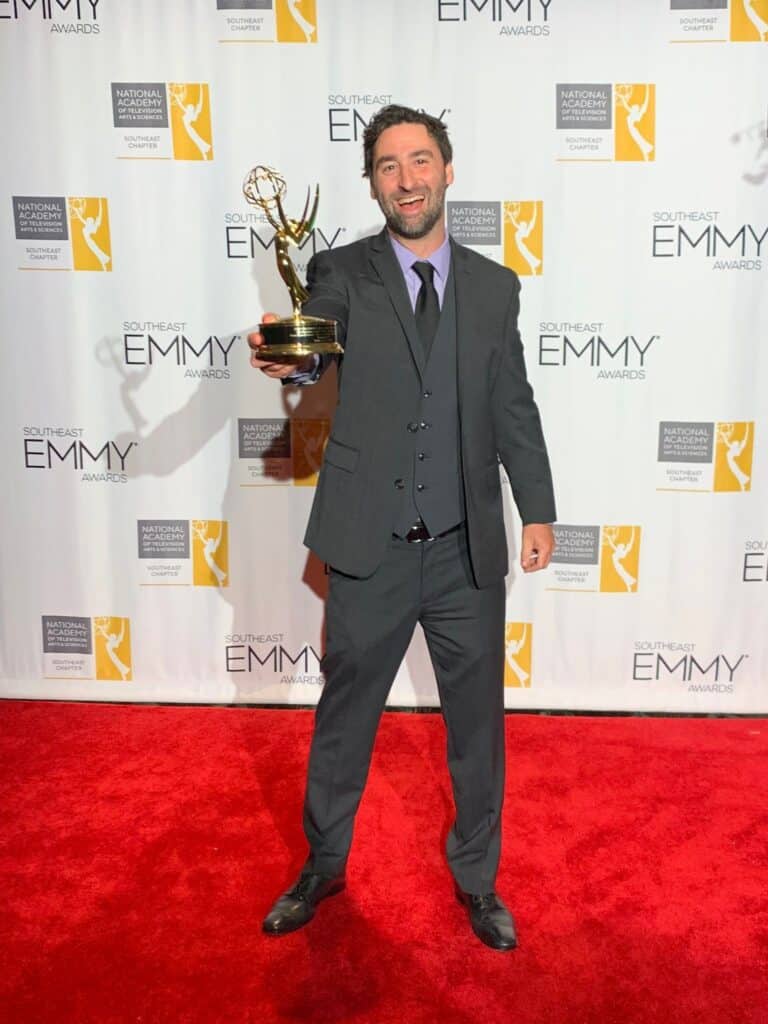
■ 2022, Southeast Regional Emmy Award: Outstanding Achievement, Sports Story — News, More Than A Game — Braves at Mets — 9/11 Remembrance | Bally Sports South/Southeast (formerly Fox Sports South/Southeast)
■ 2021, Southeast Regional Emmy Award: Outstanding Achievement, Sports Program — Live — Series, Community Heroes Week | Fox Sports South/Southeast
■ 2016, Southeast Regional Emmy Award: Outstanding Achievement, Documentary: Topical — Driven: Michael Waltrip Racing — Life in the Pits | Fox Sports South/Southeast
■ 2014, Southeast Regional Emmy Award: Outstanding Achievement, Television News and Program Specialty Excellence Category: Sports Program Series — DRIVEN: THE CHIPPER JONES STORY | Fox Sports South/Southeast
■ 2013, Southeast Regional Emmy Award: Outstanding Achievement, Television News and Program Specialty Excellence Category: Sports Program Series — DRIVEN: Tougher. Faster. Stronger. The 2013 Bobcats Draft | Fox Sports South/Southeast
■ 2013, College Sports Media Award: Outstanding Achievement, Regional/Local Networks: Program Series — Under The Lights: Southern Miss Baseball | Fox Sports South/Southeast
■ 2013, Southeast Regional Emmy Award: Outstanding Achievement, Television News and Program Specialty Excellence Category: Sports Program Series — Under the Lights: Southern Miss Baseball | Fox Sports South/Southeast
■ 2009, Southeast Regional Emmy Award: Outstanding Achievement, Television Programming Excellence Category: Interview/Discussion — In My Own Words: Charles Barkley | Fox Sports South/Southeast
■ 2007, Southeast Regional Emmy Award: Outstanding Achievement, Television News & Program Specialty Excellence Category: Sports News Program — University of Tennessee Hoops Preview | Fox Sports South/Southeast
Related
Karen Huppertz is a freelance journalist, content writer and passionate volunteer with the International Dyslexia Association. She has worked with the Atlanta Journal-Constitution for the past 10 years primarily covering city and county government action. Her endlessly inquisitive nature about a wide range of topics, desire to understand the big picture and an impassioned aspiration to provide accurate facts shape her work. Originally from South Carolina, Karen has lived in Gwinnett for nearly 30 years. She is happily married and mother to two great young adults. Her professional career includes a marketing and advertising background while her volunteer career has focused on dyslexia, a learning difference making it challenging for about 10-20% of the population to learn to read. She is proud to have played a small part in Georgia’s recent legislation calling for teacher training in how to recognize and help dyslexic students. When not posting images from her nearby garden on social media or writing to meet a deadline, she can be found advocating to make literacy available to everyone.

Around Atlanta
City Springs Theatre Company Presents the Hit Musical Jersey Boys
Published
4 months agoon
July 3, 2024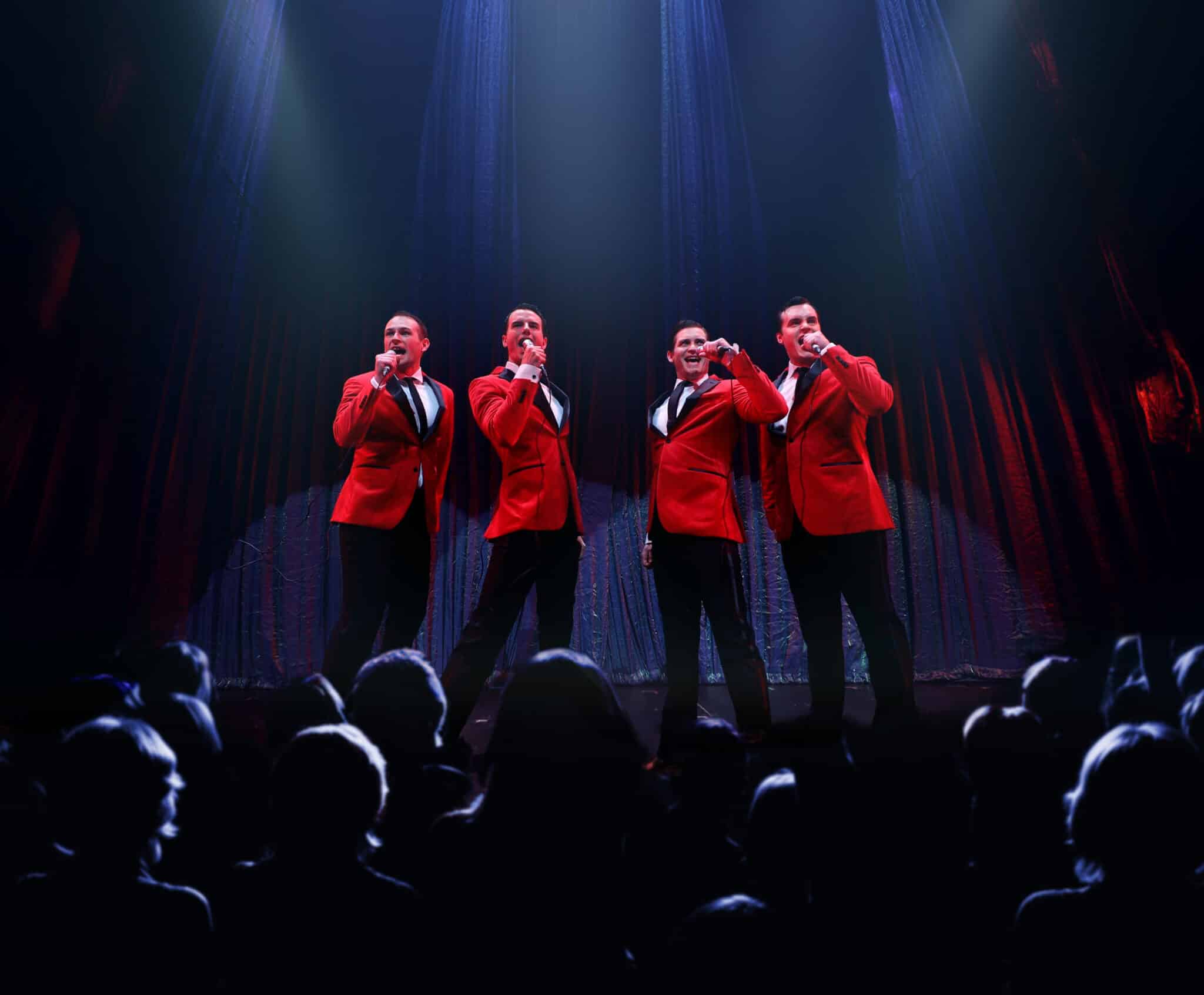
The megahit musical Jersey Boys makes its regional premiere in City Springs Theatre Company’s (CSTC) first-ever, five-week run at the Byers Theatre in Sandy Springs.
Directed by Atlanta’s-own Shane DeLancey, and choreographed by Meg Gillentine, Jersey Boys tells the rags-to-riches story of Frankie Valli and The Four Seasons. The show details their remarkable journey from the streets to the top of the charts, to their 1990 induction into the Rock and Roll Hall of Fame.
Leading the cast of Jersey Boys is Haden Rider as Frankie Valli. Rider is a City Springs Theatre Company veteran, with recent roles in both Legally Blonde (Emmett) and Fiddler on the Roof (Perchik).

Presented by Resurgens Spine Center, Jersey Boys runs from July 12 through August 11, and shines a special spotlight on home-grown talent, as the show’s four leading men are all Atlanta-area residents.
With phenomenal music, memorable characters and great storytelling, Jersey Boys follows the fascinating evolution of four blue-collar kids who became one of the greatest successes in pop-music history.
“City Springs Theatre Company is very proud to be the first in the southeast region to present Jersey Boys,” said CSTC Artistic Director and Tony Award-winner Shuler Hensley. “Our audiences have been asking for this particular show since we opened. The production is truly stacked with talent onstage and off, and we’re pulling out all the stops to bring audiences an experience that will rival any previous version of the show.”
Jersey Boys premiered at the La Jolla Playhouse in 2005, prior to its 13-year Broadway run, from 2005 to 2017. There have been productions of the show in Las Vegas, UK/Ireland, Toronto, Melbourne, Singapore, South Africa, the Netherlands, Japan, Dubai and China.
Jersey Boys features a book by Marshall Brickman and Rick Elice, with music by Bob Gaudio, and lyrics by Bob Crewe.
Individual tickets to see Jersey Boys are on sale now ($42 – $108), with discounts for seniors, students, groups and active and retired military personnel.
CSTC’s Box Office is open Monday through Friday from 10:00 a.m. – 5:00 p.m.
Call 404-477-4365 or visit CitySpringsTheatre.com for more information.
This production contains adult language and is recommended for mature audiences.
Performance schedule:
Friday, July 12 | 8:00 p.m.
Saturday, July 13 | 2:00 p.m. & 8:00 p.m.
Sunday, July 14 | 2:00 p.m. & 7:30 p.m.
Tuesday, July 16 | 7:30 p.m.
Wednesday, July 17 | 7:30 p.m.
Thursday, July 18 | 8:00 p.m.
Friday, July 19 | 8:00 p.m.
Saturday, July 20 | 2:00 p.m. & 8:00 p.m.
Sunday, July 21 | 2:00 p.m. & 7:30 p.m.
Tuesday, July 23 | 7:30 p.m.
Wednesday, July 24 | 7:30 p.m.
Thursday, July 25 | 8:00 p.m.
Friday, July 26 | 8:00 p.m.
Saturday, July 27 | 2:00 p.m. & 8:00 p.m.
Sunday, July 28 | 2:00 p.m. & 7:30 p.m.
Tuesday, July 30 | 7:30 p.m.
Wednesday, July 31 | 7:30 p.m.
Thursday, August 1 | 8:00 p.m.
Friday, August 2 | 8:00 p.m.
Saturday, August 3 | 2:00 p.m. & 8:00 p.m.
Sunday, August 4 | 2:00 p.m. & 7:30 p.m.
Tuesday, August 6 | 7:30 p.m.
Wednesday, August 7 | 7:30 p.m.
Thursday, August 8 | 8:00 p.m.
Friday, August 9 | 8:00 p.m.
Saturday, August 10 | 2:00 p.m. & 8:00 p.m.
Sunday, August 11 | 2:00 p.m. & 7:30 p.m.
Related
Arts & Literature
Local Students Show Off Their Artistic Creations
Published
5 months agoon
June 2, 2024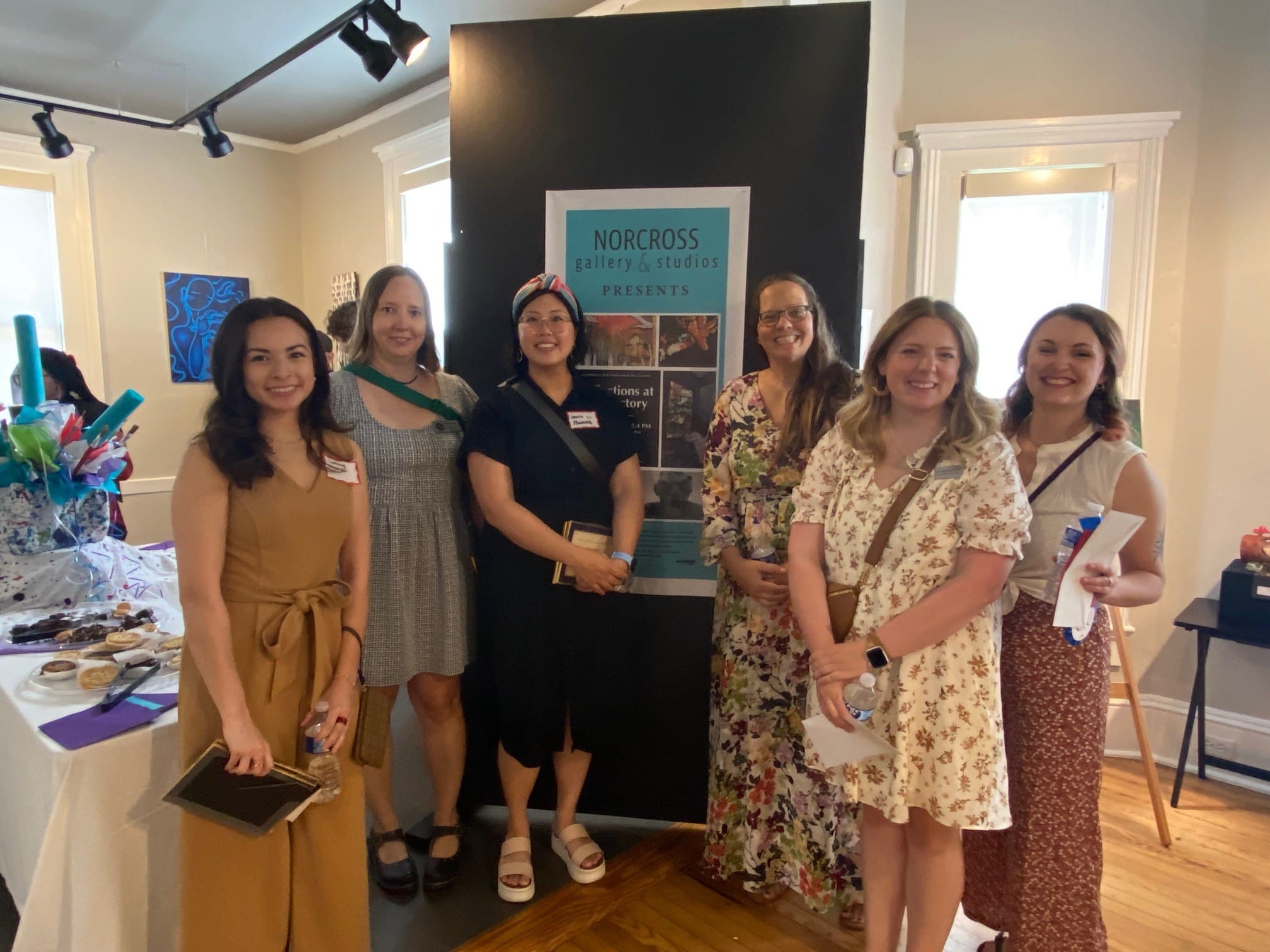
From May 11 through May 18, the Norcross Gallery & Studios kicked off a fantastic exhibition, Reflections at Rectory, which showcased the works of 36 rising stars: AP and IB art students from our local high schools.
The opening reception celebrated their creativity and dedication. Gallery director Anne Hall presented a dozen awards generously sponsored by the community, a testament to the local support for these young artists.
One prestigious award, the Terri Enfield Memorial Award, holds special significance.
Established by Terri’s daughters, it recognizes not just artistic excellence, but also leadership, work ethic and the spirit of collaboration. Last year’s winner, Aidan Ventimiglia, even played a part in selecting this year’s recipient Jasmine Rodriguez.
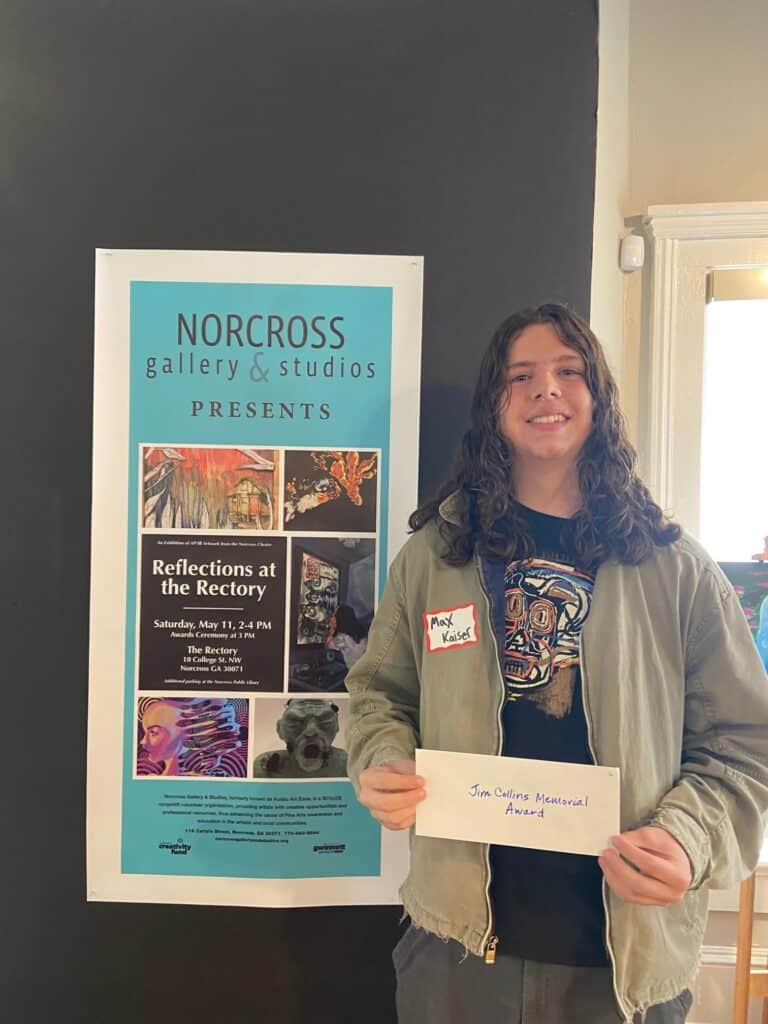
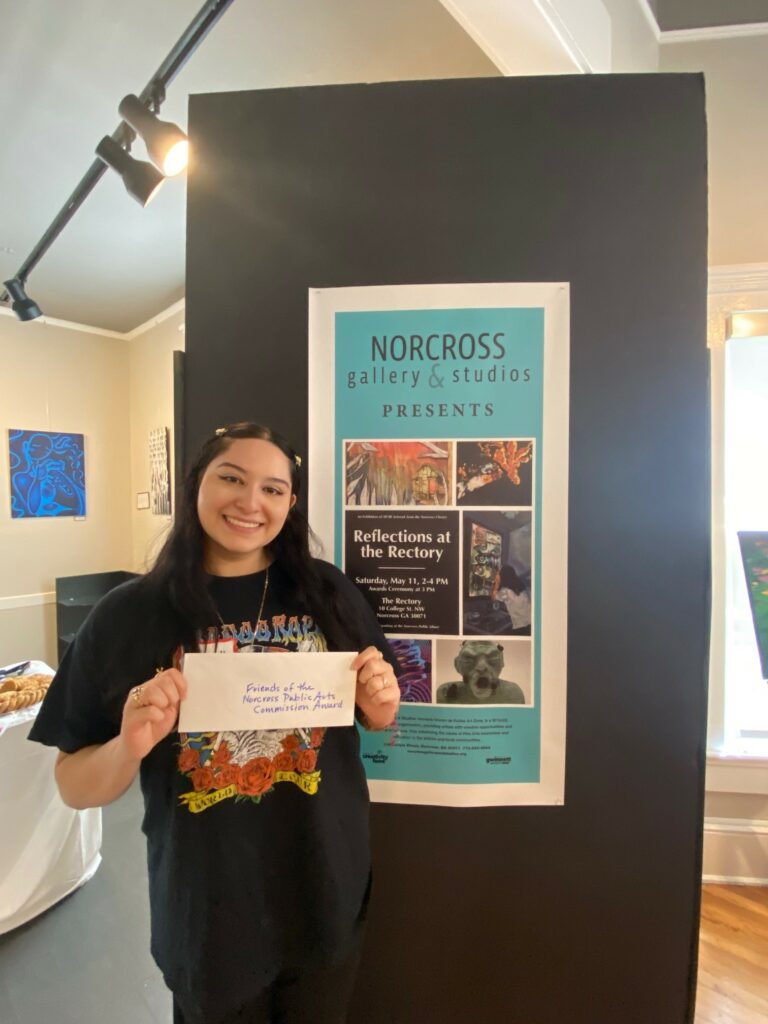
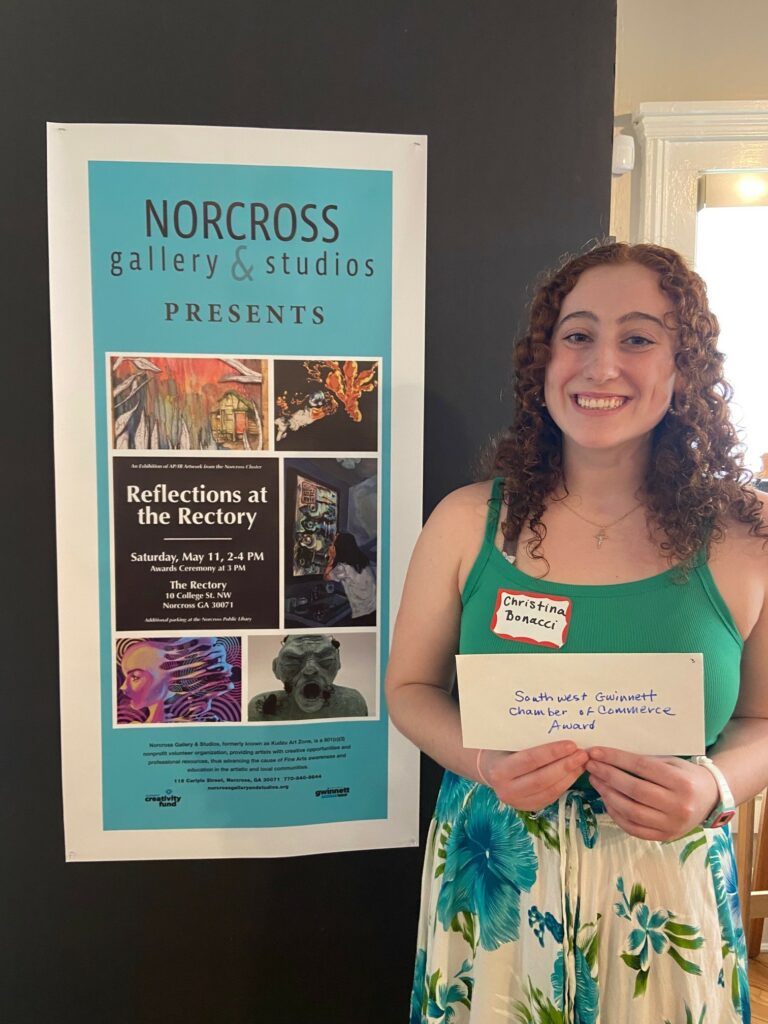
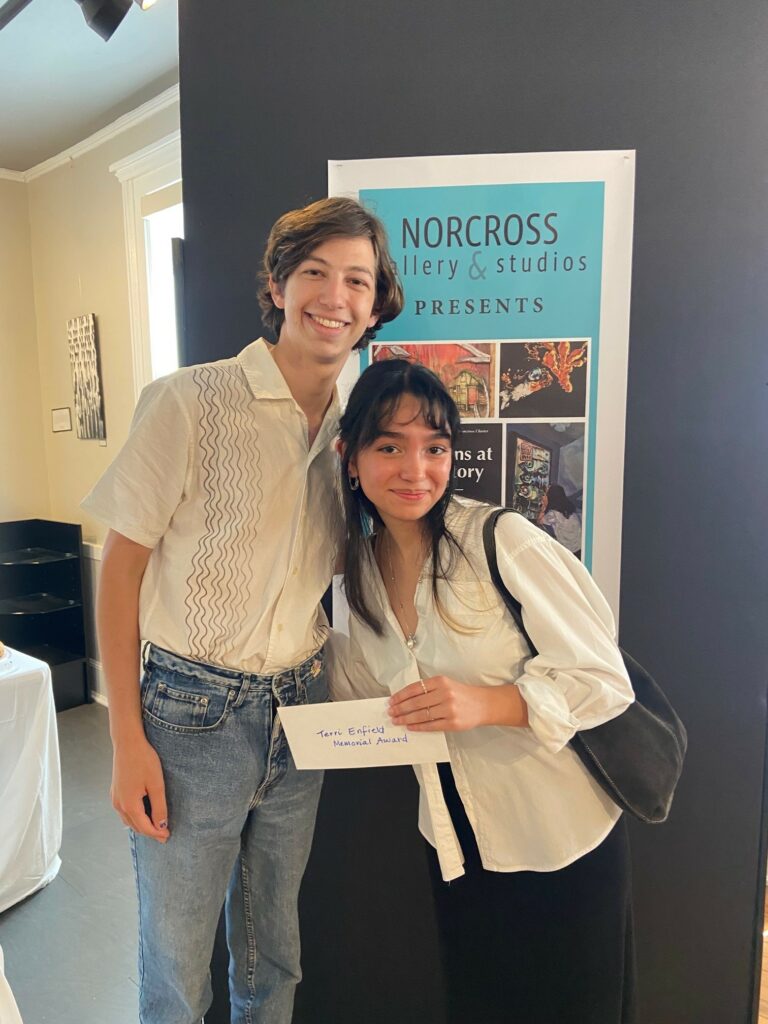
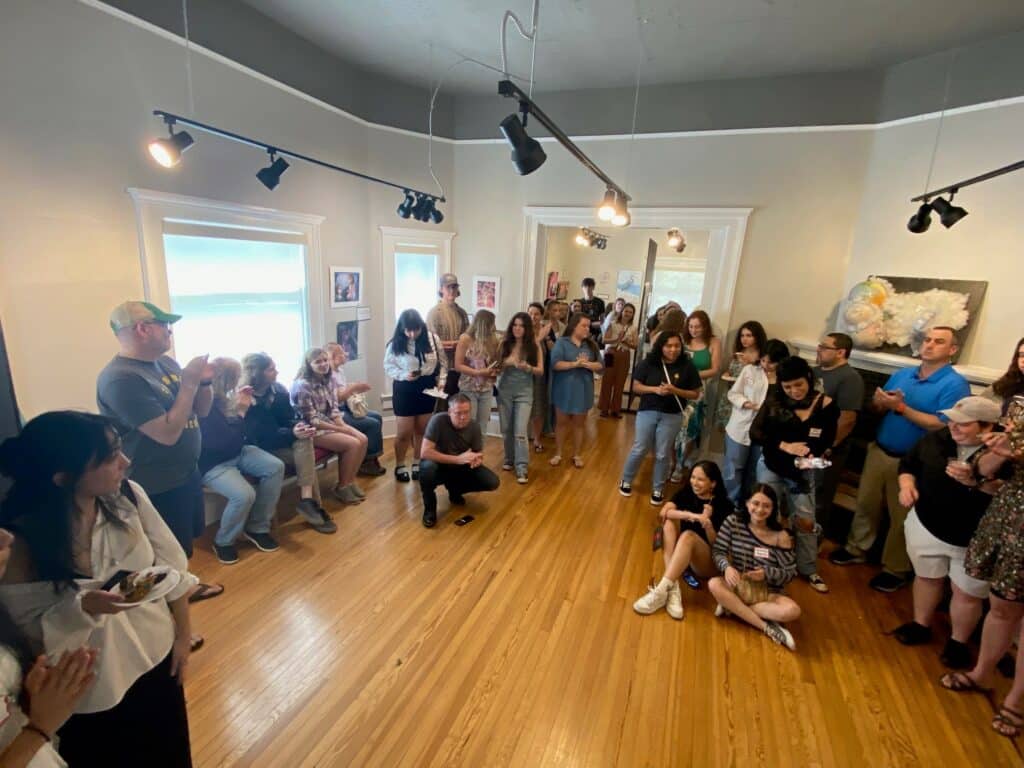
Congratulations to all the student artists.
Students in the second annual Reflections at the Rectory exhibit
Norcross High School:
- Gustavo Benumea-Sanchez
- Maycol Cruz Padilla
- Dorie Liu
- Harlet Martinez Castro
- Paulina Santana
- Gisela Rojas Medina
- Clare Fass
- Ava Netherton
- Ubaldo Diaz
- Katia Navas-Juarez
- Mariah Ingram
- Arisdelcy Juan
- Max Kaiser
- Dani Olaechea
- Christina Bonacci
- Diana Ortiz Ventura
- Katie Yerbabuena-Padierna
Paul Duke High School:
- Adamu Abdul-Latif
- Salma Noor Alabdouni
- Samrin Zaman
- Camryn Vinson
- Liz Damian
- Cecelia Berenguer
- Jasmine Rodriguez
- Angelina Bae
- Dahyana Perez
- Jonah Swerdlow
- Kyra Allicock
- Anni Brown
- Kaleb Fields
- Destiny Jones
- Gabriela Leal-Argueta
- Madisyn Mathis
- Ashley McDonough
- Ahtziri Pinones
- Alondra Valiente-Torres
Related
Arts & Literature
Book, TV and Podcast Recommendations for this Summer
Published
5 months agoon
June 2, 2024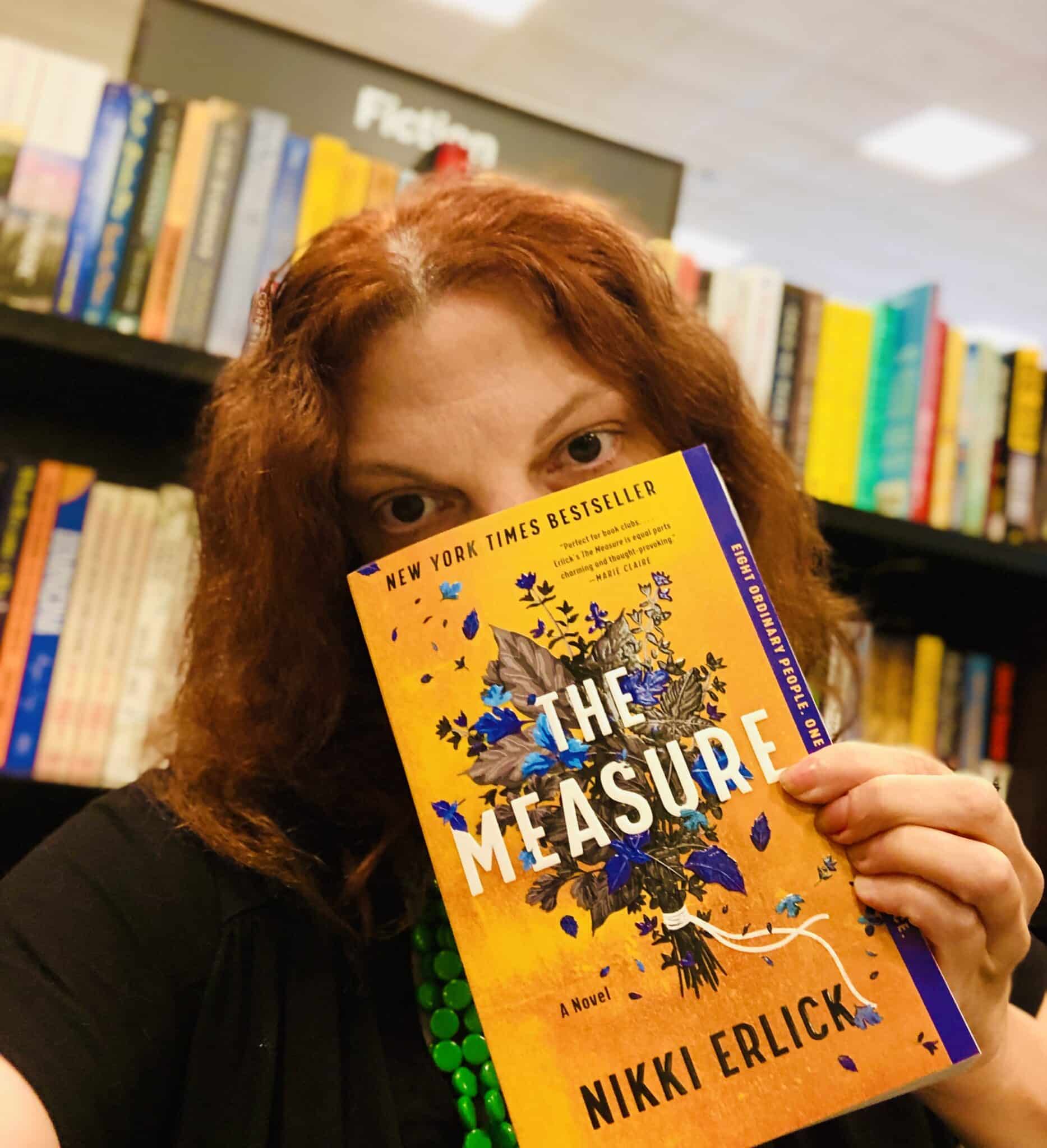
Beat the heat this Summer with a good book, show or podcast. This year, Peachtree Corners Magazine received over 30 recommendations from more than a dozen city residents. There is something for everyone on this list, so let’s dive in.
Machine Made: Tammany Hall and the Creation of Modern American Politics
by Terry Golway
This 400-page book offers readers a comprehensive and insightful exploration of one of the most influential political machines in American history. It provides valuable lessons and perspectives on the intersection of politics, power and society.
Turning Point: The Bomb and the Cold War
Stream on Netflix
This nine-part series offers viewers a thought-provoking exploration of one of the most consequential periods in modern history. It provides deep insights into the complexities of nuclear politics and the enduring legacy of the Cold War.
Fareed Zakaria GPS
Listen on CNN Audio
This podcast comprehensively examines foreign affairs. It enhances a listener’s global awareness, fosters critical thinking and sheds light on complex issues shaping our world today.
— Brian Johnson, City Manager for Peachtree Corners
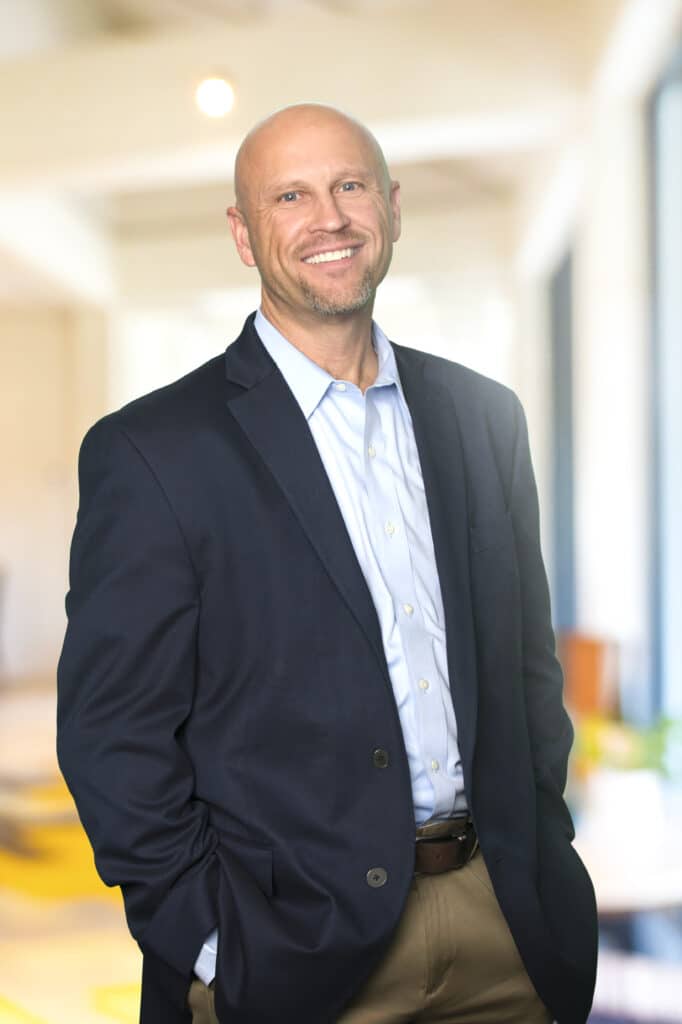
Empowering Nurses Through Self-care: Unleashing Your Potential and Thriving in the Nursing Profession
by Audrey Boyce
Audrey Boyce offers a practical guide to help nurses find balance and fulfillment in their personal lives and professions. With a comprehensive overview of self-care strategies, this book is essential for nurses looking to recharge, reduce stress and increase job satisfaction.
The Go-Giver, Expanded Edition: A Little Story About a Powerful Business Idea by Bob Burg and John David Mann
The Go-Giver tells the story of Joe, an ambitious young man striving for success. Through Joe’s journey, this book imparts powerful lessons about the significance of giving, collaboration and building meaningful relationships in achieving success.
Special Ops: Lioness
Stream on Paramount+
The protagonist, Joe, attempts to balance her personal and professional life as the tip of the CIA’s spear in the war on terror. The Lioness Program enlists Cruz to operate undercover alongside Joe among the power brokers of State terrorism.
Money and Wealth
Listen on Apple Podcasts
In Money and Wealth, John Hope Bryant provides valuable insights into financial literacy and wealth-building strategies. With a clear and accessible approach, Bryant aims to empower listeners with practical knowledge to achieve financial stability and success.
— Bobby Cobb, CEO of Cobb Global Outreach Inc.
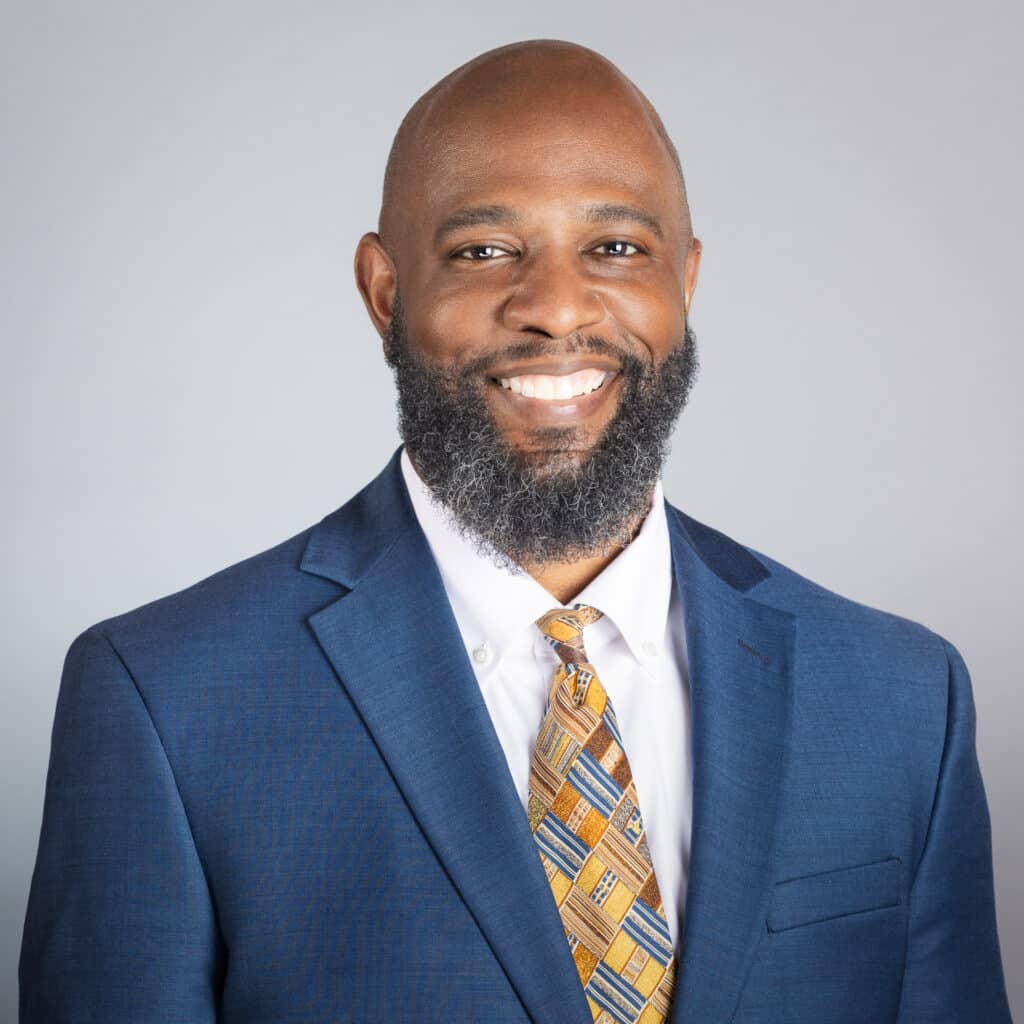
1984
by George Orwell
The new audio drama of George Orwell’s 1984 on Audible is nothing short of phenomenal. With a full cast of film stars and sound effects in stereo, you’ll feel like you’re actually in Oceania, being watched by Big Brother.
— Jill Tew, local author of the forthcoming young adult dystopian novel The Dividing Sky
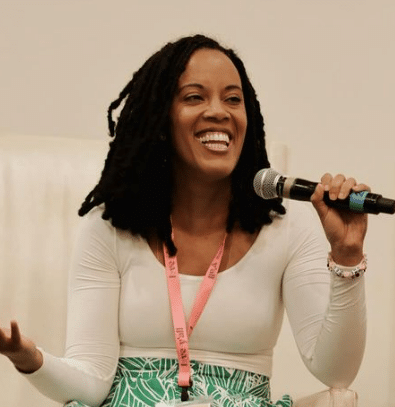
Enter Ghost
by Isabella Hammad
I recently read this and loved the writing. The author plays around with formatting between narrating the story and switching to the format of a play to show the dynamics between characters.
— Ruwa Romman, Georgia State Representative
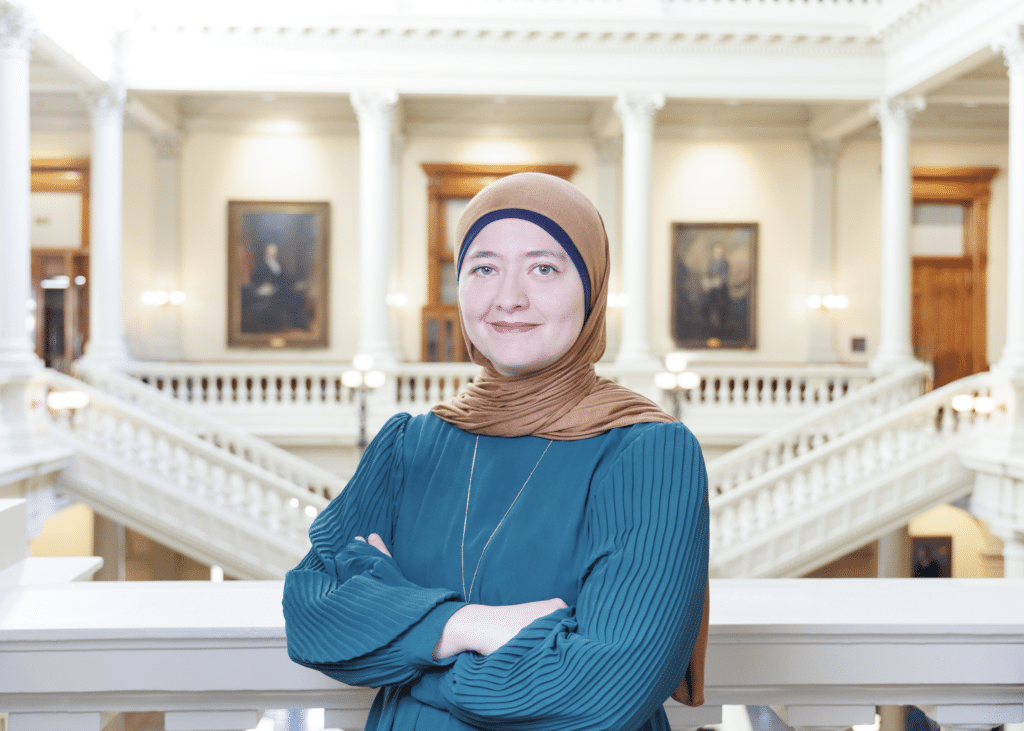
Seeing Eye Girl
by Beverly Armento
Beverly Armento’s account of her life in Seeing Eye Girl is truly remarkable. I was captivated by her story of resilience, strength and, ultimately, forgiveness.
— Erin Griffin, Norcross High School Foundation for Excellence Co-President
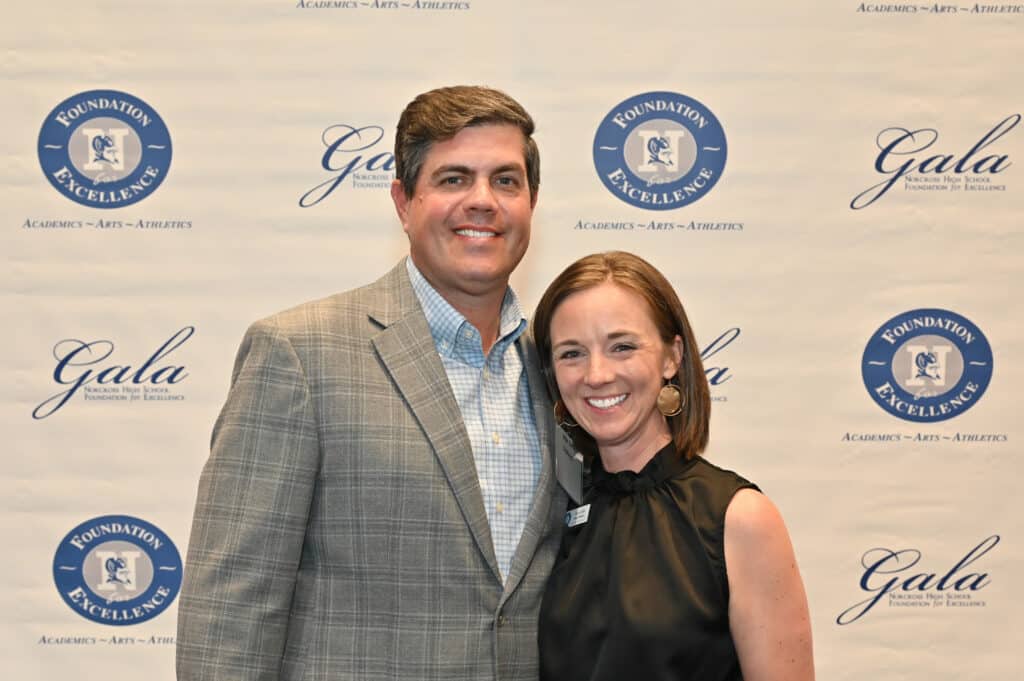
Never Enough: When Achievement Pressure Becomes Toxic – And What We Can Do About It
by Jennifer B. Wallace
This book presents research on how to raise healthy, joyful achievers in a hyper-competitive world. The author was a guest speaker at Greater Atlanta Christian’s (GAC) Parent Partnership Series this year, and we heard about the importance of children knowing that their intrinsic self-worth is not contingent solely upon external achievements.
The Anxious Generation
by Jonathan Haidt
Discover the root causes behind the epidemic of today’s teen mental illness. With compelling data, Jonathan Haidt unveils the decline of play-based childhood and offers practical solutions for a healthier, more fulfilling upbringing. We have asked GAC faculty to add this to their personal summer reading list.
— Dr. Scott Harsh, President of Greater Atlanta Christian School
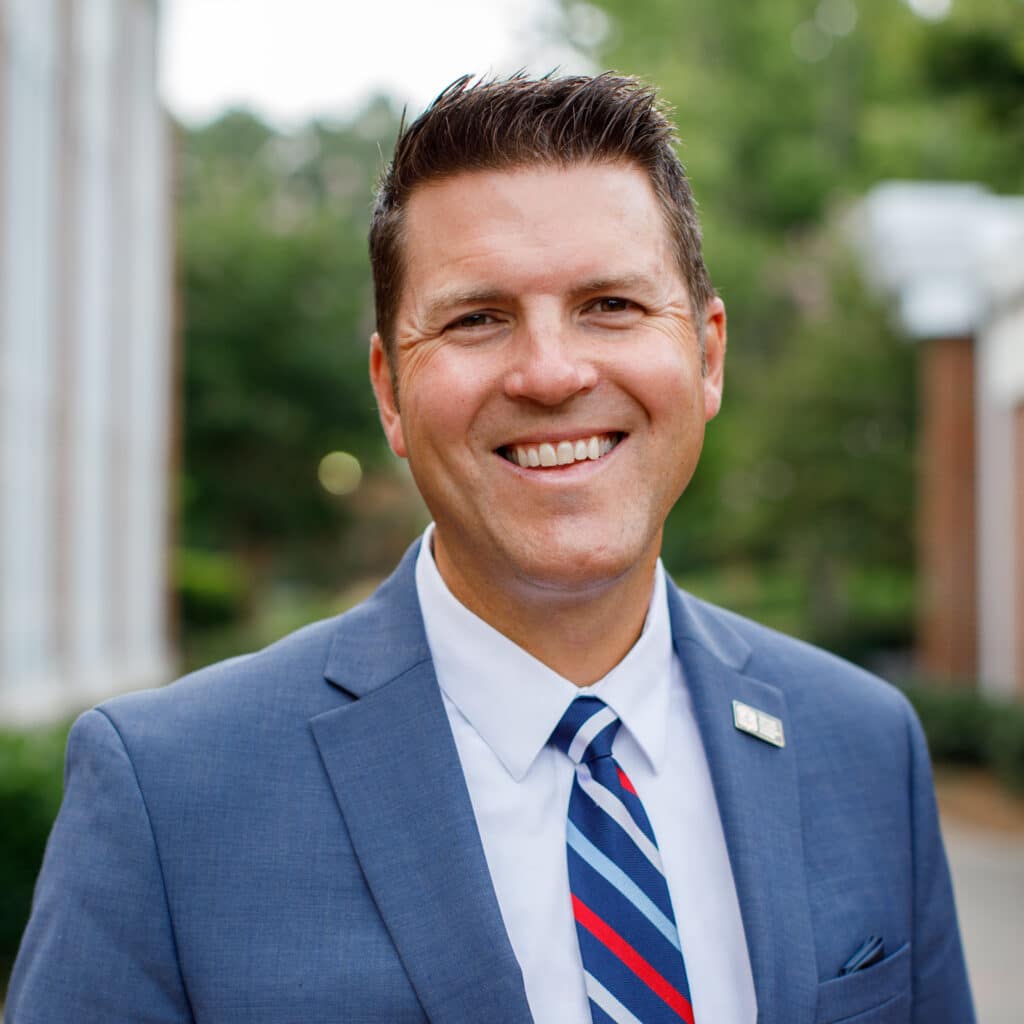
Glad You’re Here
by Craig Cooper and Walker Hayes
Glad You’re Here tells the true, redemptive story of country music singer Walker Hayes and his unlikely friendship with pastor Craig Cooper. In alternating chapters, each individual shares their unique perspective on pivotal moments in their friendship, and the book reminded me to prioritize the patient and persistent cultivation of community.
— Ann Cousins, Communications Director and Wesleyan School
The Boredom Experiment
Listen on Apple Podcasts
The Boredom Experiment, hosted by Jeremy and Ashley Parsons, is a short, heartfelt podcast series that documents and explores the effect of removing digital distractions and social media from their family’s lives for a year.
Over eight episodes, they share their experiences and insights into how this experiment impacts their creativity, relationships and overall well-being. The Parson’s storytelling thoughtfully weaves together interviews, music and their musings in such a creative, personal way that makes it an absolute delight to listen to.
The 1000 Hours Outside Podcast
Listen on Apple Podcasts, Spotify and Youtube
Digital Minimalism
by Cal Newport
Digital Minimalism advocates for a thoughtful and intentional approach to technology use. Newport argues that constant connectivity and digital distractions hinder productivity and well-being and encourages individuals to choose tools and habits that align with their values and long-term goals. In a digitally crowded world, this book was a needed reminder to be intentional with my time and strategic with how I use technology.
— Natalie Dettman, Creative Director at Wesleyan School
Sideline C.E.O.
by Marty Smith
While on this surface this book offers great wisdom from some of the most successful coaches of our time, it also provides a behind-the-scenes look at the lives of many people we admire.
From learning about Greg Sankey figuring out how to lead the SEC through Covid as he sat on his front porch to Mack Brown processing through how to lead his football team through racial tensions at UNC, you realize that these men [and women] are normal human beings that face the same difficult choices as the rest of us.
Not to mention, Marty Smith captures the lives and insight of these coaches in a fun, compelling way!
Practicing the Way
by John Mark Comer
New Kid
by Jerry Craft
Where Do We Go from Here
by Martin Luther King Jr.
— Joseph Antonio, Middle School Principal at Wesleyan School
West with Giraffes
by Linda Rutledge
This is lightly based on a true story. It is the story of moving giraffes who survived a hurricane, were rescued in the Atlantic, and were carried cross-country to the San Diego Zoo. It is well-written, and the character development is fantastic.
Crossing the country with two giraffes during the Depression created excitement in all the small struggling areas. The joy of those who had never dreamed of seeing a giraffe in real life will bring joy to anyone reading this book.
Housewives of True Crime
Listen on Apple Podcasts and Youtube
Moms and Mysteries
Listen on Apple Podcasts, iHeart Radio and Spotify
Southern Fried Crime
Listen on Apple Podcasts and Youtube
Wiser than Me with Julia Louis-Dreyfus
Listen wherever you get your podcasts
— Nancy Minor, The Nancy Minor Team
The Women
by Kristen Hannah.
A great read about the Army nurses in Vietnam.
— Laurie Rogers, The Nancy Minor Team
In The Woods
by Tana French
This book is a real page-turner. The author is a gifted writer, so even though it is a crime thriller, it reads like a novel. There are six books in the series, and I have read all of them.
Casefiles
Listen on Apple Podcasts and Spotify
This is a true crime podcast that has been around for several years. The stories are detailed and very interesting and cases are examined from all over the world.
— Shameka Allen, MBA, MA, CEO of Good Samaritan Health Centers of Gwinnett
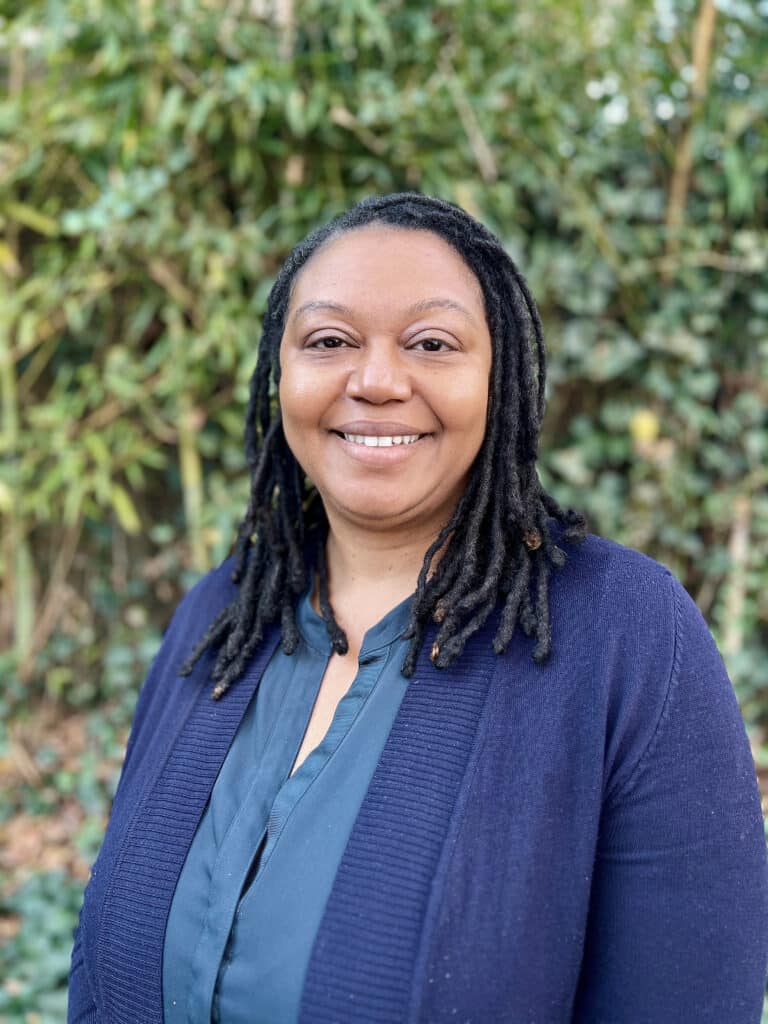
Over the Edge of the World
by Laurence Bergreen
Over the Edge of the World is a captivating account of Magellan’s expedition around the world. We all know Magellan’s name but few of us know the rich details behind the adventure and how it unfolded. I was inspired by the courage and bravery of those who took part in the great Age of Exploration.
Arrested Development
Stream on Netflix
This is easily one of our favorite shows. My wife, Meredith, and I have watched and re-watched it so many times and still find it so hilariously funny. The show blends clever writing with quirky characters and intricate, running gags. There’s always money in the Banana Stand!
Dr. Death
Listen on Apple Podcasts, Spotify and Wondery
This gripping true-crime podcast explores the shocking story of a dangerous surgeon. It’s a must-listen for its compelling narrative, deep investigative journalism and critical insights into medical malpractice and systemic failures. The podcast has since been made into a limited streaming TV series.
— Scott Hilton, Georgia State Representative
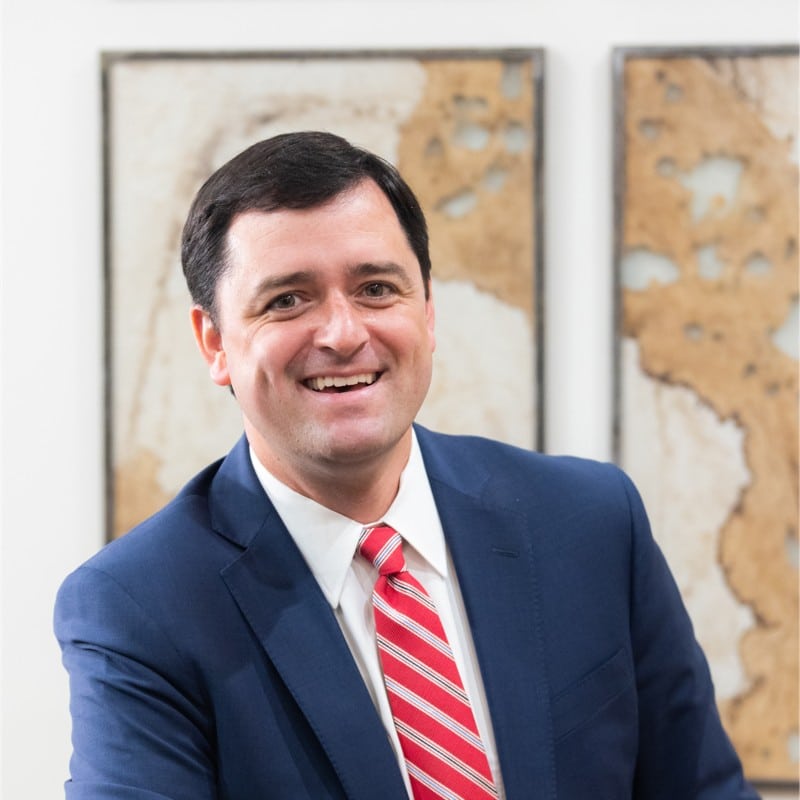
Sleep Wrecked Kids
by Sharon Moore
This book explains how inadequate sleep affects children’s growth, development and learning. This is a great guide to creating better sleep routines.
Healthy Sleep Happy Kid
by Meghna Dassani
This quick, easy read offers valuable insights into how sleep impacts a child’s health. It provides practical tips for improving your child’s sleep environment and habits and is a go-to resource for parents aiming to enhance their child’s sleep and overall wellness.
I can’t overstate the importance of good sleep habits for the overall well-being of your child and the entire household. Quality sleep is the foundation for happy, healthy kids and stress-free parents, setting the stage for the best possible summer with your family.
— Dr. Gia Grannum, Board Certified Pediatric Dentist of Agape Pediatric Dentistry
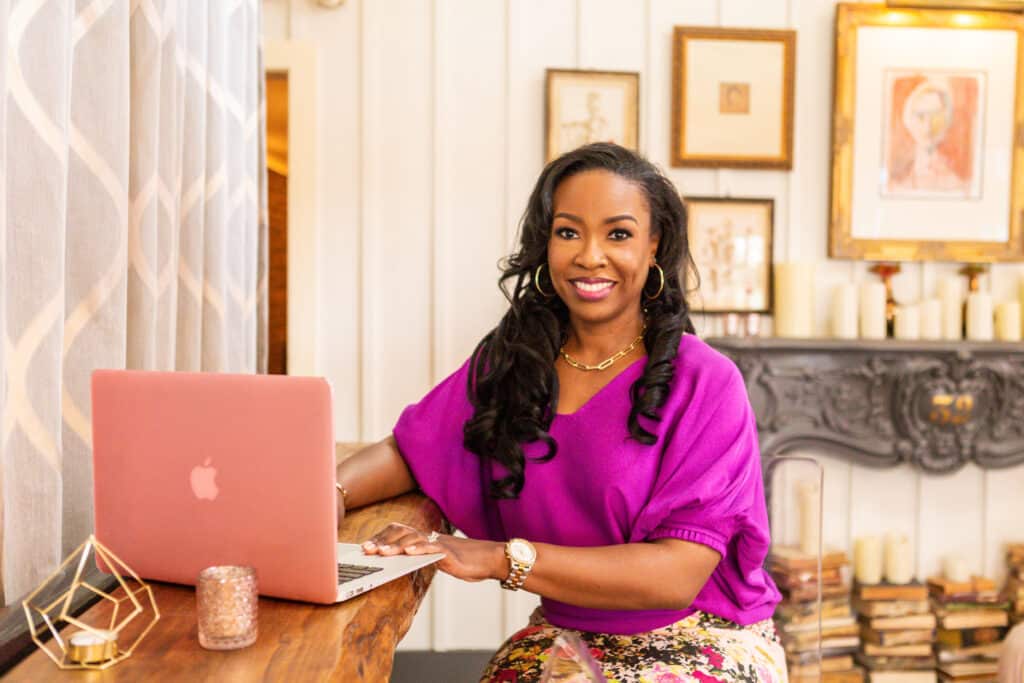
The Measure
by Nikki Erlick
I recommend The Measure by Nikki Erlick, which is about to come out in paperback! It’s a great pick for summer reading or a book club!
Poured Over, the Barnes & Noble Podcast
Stream on the Barnes & Noble website and Apple Podcasts
Check out the Poured Over podcast for interviews with your favorite authors, book recommendations for your TBR pile and more.
— Amanda Couch, Assistant Manager at Barnes & Noble at The Forum
Want even more recommendations? Check out last year’s list here.
Related
Read the Digital Edition
Subscribe
Keep Up With Peachtree Corners News
Join our mailing list to receive the latest news and updates from our team.
You have Successfully Subscribed!

TransPak Acquires Reid Packaging to Expand East Coast Presence

Peachtree Corners City Leaders Engage Residents on Land Use Development

The NOW Massage Opens Peachtree Corners Boutique at The Forum

GCPL Accepting Applications for Next New Start Entrepreneurship Incubator

Ruwa Romman’s Re-Election Bid: Addressing Housing, Taxes and Transportation in Gwinnett [Podcast]

Councilmember Sadd to Host Town Hall Meeting on October 29

PTC Arts Inc. Furthers Mission to Provide Accessible Art

From Corporate to Sci-Fi Author: Jill Tew Discusses ‘The Dividing Sky’ [Podcast]

From Corporate to Sci-Fi Author: Jill Tew Discusses ‘The Dividing Sky’ [Podcast]

PTC Arts Inc. Furthers Mission to Provide Accessible Art

Councilmember Sadd to Host Town Hall Meeting on October 29

Ruwa Romman’s Re-Election Bid: Addressing Housing, Taxes and Transportation in Gwinnett [Podcast]

GCPL Accepting Applications for Next New Start Entrepreneurship Incubator

TransPak Acquires Reid Packaging to Expand East Coast Presence

The NOW Massage Opens Peachtree Corners Boutique at The Forum

Peachtree Corners City Leaders Engage Residents on Land Use Development

Light up the Corners [Video]

Capitalist Sage: Business Leadership in Your Community [Podcast]

Cliff Bramble: A Culinary Adventure through Italy

Top 10 Brunch Places in Gwinnett County

A Hunger for Hospitality

THE CORNERS EPISODE 3 – BLAXICAN PART 1

Top 10 Indoor Things To Do This Winter

The ED Hour: What it takes to Remove Barriers from Education
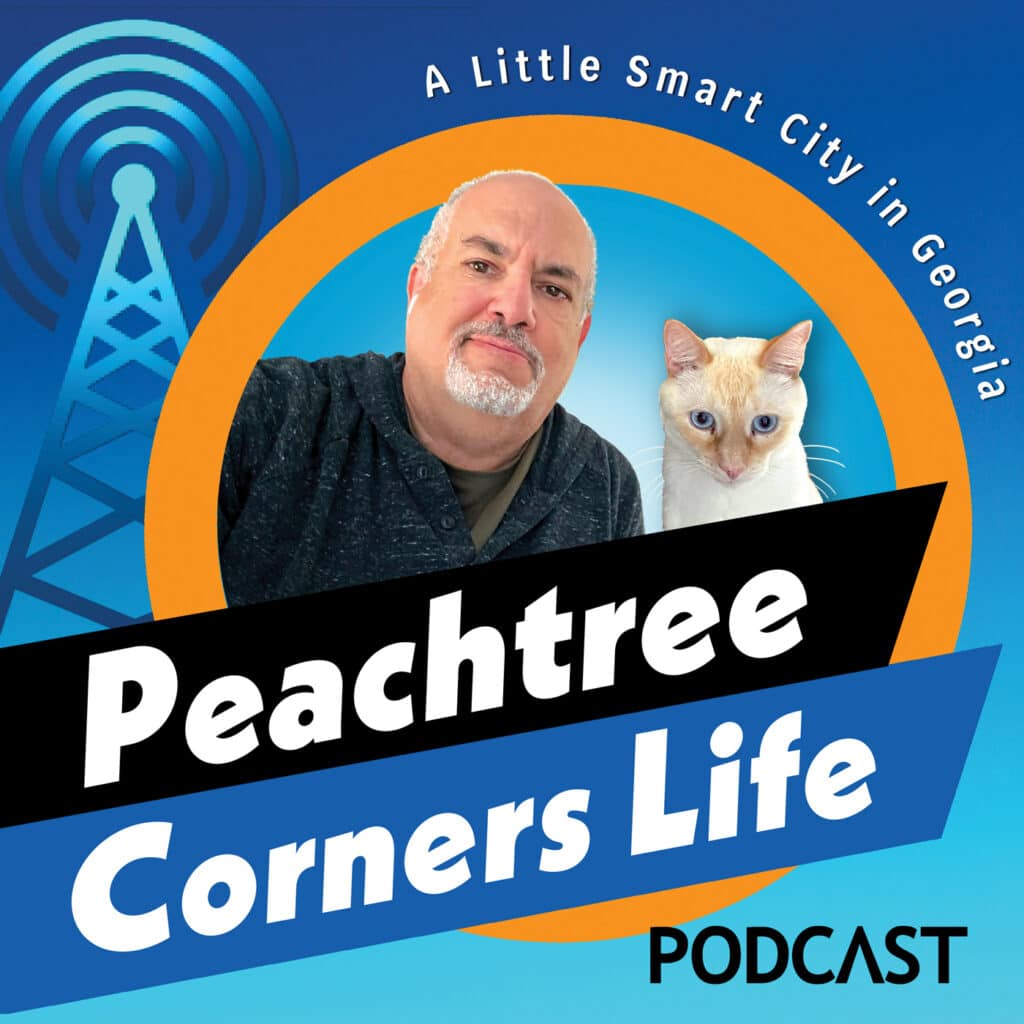
Peachtree Corners Life
Topics and Categories
Trending
-
Business1 week ago
TransPak Acquires Reid Packaging to Expand East Coast Presence
-
Health & Wellness1 week ago
The NOW Massage Opens Peachtree Corners Boutique at The Forum
-
Community5 days ago
GCPL Accepting Applications for Next New Start Entrepreneurship Incubator
-
Peachtree Corners Life4 days ago
Ruwa Romman’s Re-Election Bid: Addressing Housing, Taxes and Transportation in Gwinnett [Podcast]




